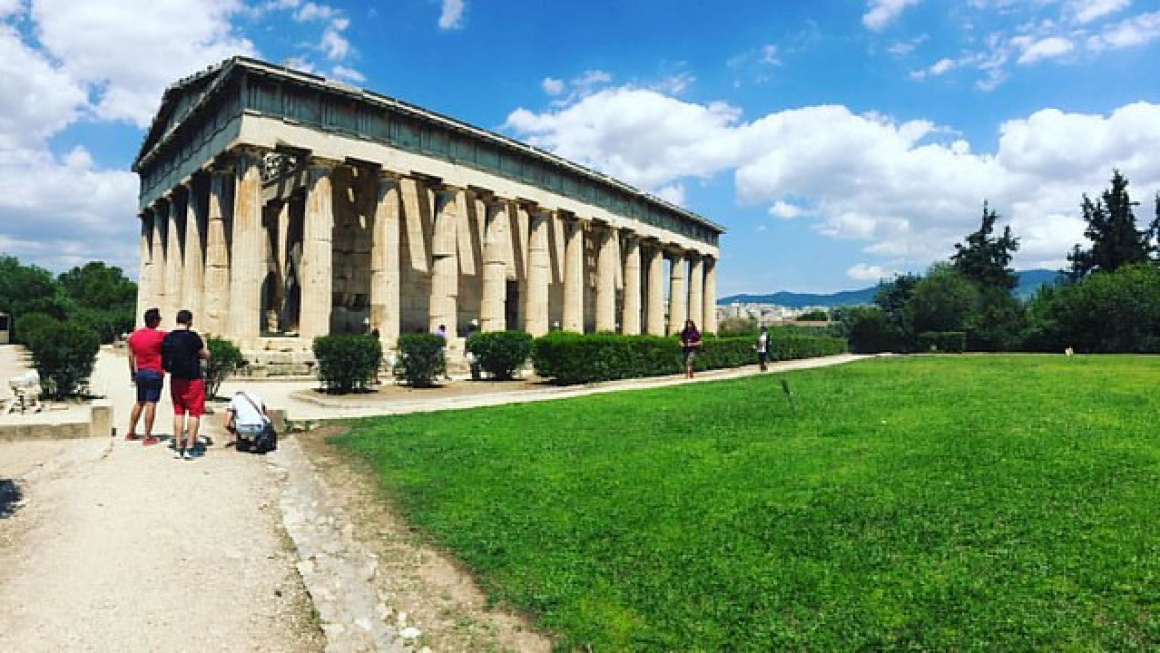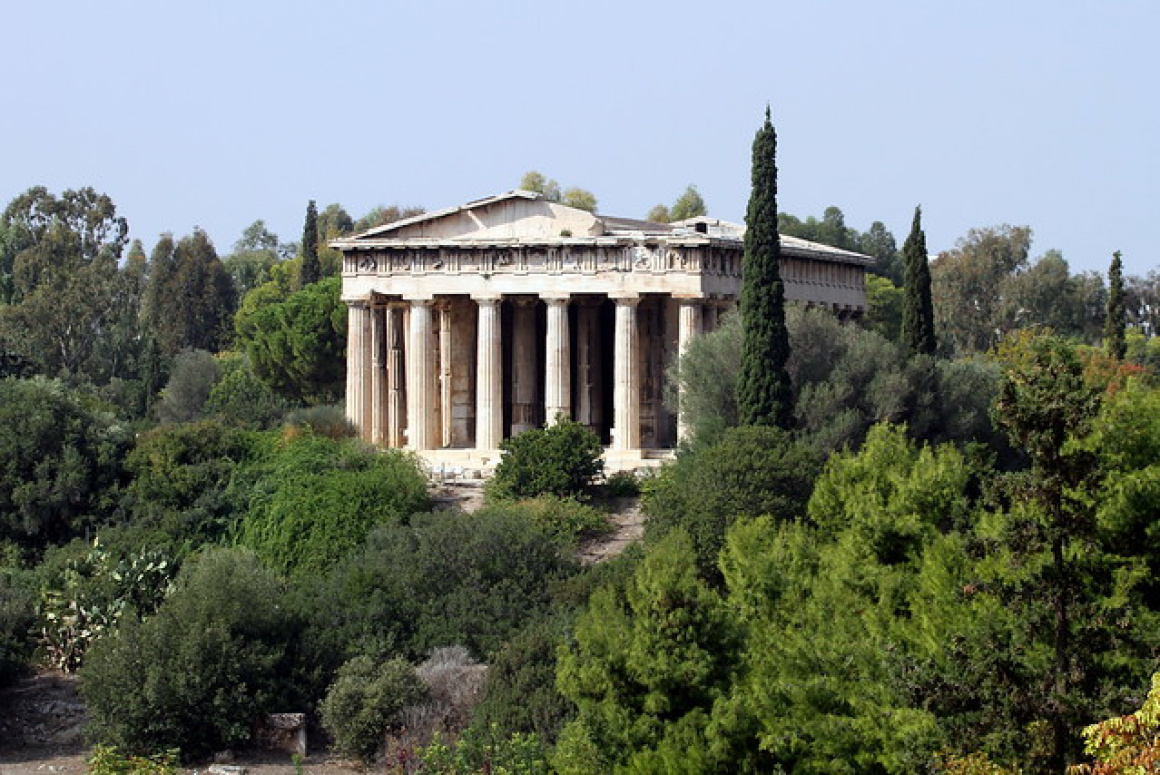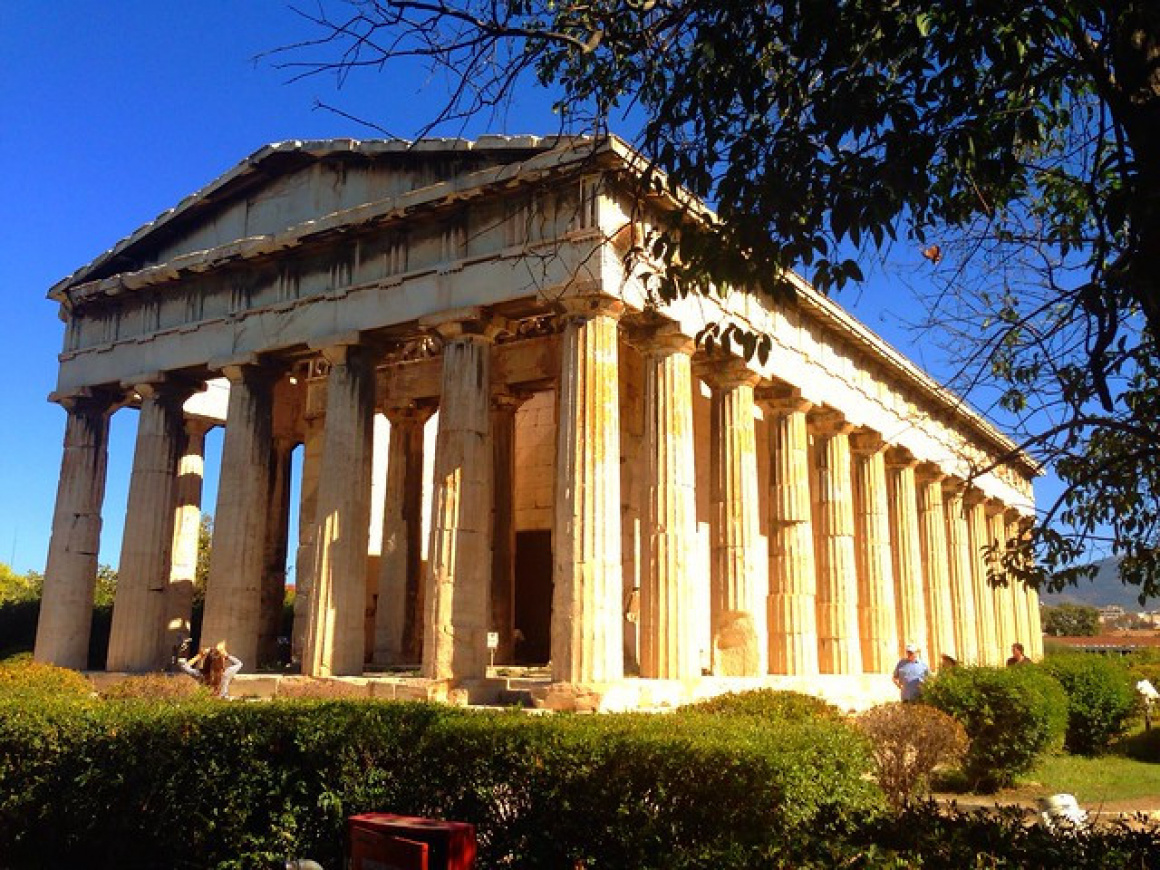Perched gracefully on the hill of Agoraios Kolonos, overlooking the ancient Agora, the Temple of Hephaestus stands as one of the best-preserved ancient Greek temples in the world. This Doric masterpiece, dedicated to Hephaestus, the god of fire and metalworking, and Athena Ergane, the patron of crafts and pottery, is a testament to Athens' rich history and architectural prowess. For those exploring what attractions to see in Athens, this temple is an unmissable gem that offers a rare glimpse into the grandeur of classical antiquity.
A Timeless Connection to the Gods
Built in the 5th century BC, the Temple of Hephaestus was almost concurrent with the Parthenon, making it one of the oldest surviving structures in Athens. Its construction began in 449 BC, and it is believed it was under the supervision of the architect Ictinus, who also worked on the Parthenon. The temple’s enduring presence is a marvel in itself, having survived wars, invasions, and the passage of time with remarkable integrity. Unlike many ancient ruins, which are mere fragments of their former glory, the Temple of Hephaestus remains almost entirely intact, with its columns, friezes, and roof still standing proudly.

 'temple of hephaestus' - Attribution: Robot B
'temple of hephaestus' - Attribution: Robot BAs you approach the temple, you’ll notice its harmonious proportions and the intricate details of its Doric columns. The friezes, though weathered, depict scenes from Greek mythology, including the labours of Hercules and the exploits of Theseus. These carvings are not just decorative; they tell stories that were central to Athenian identity and values. Standing here, you can almost hear the echoes of ancient craftsmen and worshippers who once filled this sacred space.
An Architectural Gem
The temple’s peristyle layout features a continuous row of tall Doric columns framing the main hall (cella). Though relatively small compared to other ancient buildings, the proportions here are a splendid example of classical harmony. When the sun is low on the horizon—early in the morning or in the late afternoon—warm light falls across the limestone, showing off subtle colour variations that make the temple appear almost alive.

 'Temple of Hephaestus' - Attribution: Greg Schechter
'Temple of Hephaestus' - Attribution: Greg SchechterThere’s a local tip that many Athenians swear by: head over on a Sunday morning. That’s when the area is often livelier with impromptu performances by street musicians, especially around the nearby Monastiraki neighbourhood. You might end up with a personal soundtrack for your walk, making the atmosphere around the temple even more enchanting.
Experiencing the Surroundings
Because of its convenient location in the heart of the historical centre, the Temple of Hephaestus also serves as a fantastic vantage point for exploring the rest of the ancient city. Wander through the remains of workshops, houses, and marketplaces in the Ancient Agora to grasp daily life in classical Athens. The area has leafy pathways, occasional benches, and a few hidden corners where you can pause to appreciate the temple’s silhouette rising against the modern skyline of Athens.
A stroll slightly further south brings you into the Thissio district, known for its cafes and laid-back vibe. Residents of Athens often come here to sip coffee while looking out towards the temple’s limestone façade. It’s a unique perspective that many travellers miss if they only rush from site to site.
A Window into Everyday Athens
Some visitors don’t realise that the Temple of Hephaestus stands as a testament not just to grand mythologies, but also to the city’s historic craftsmanship and communal gatherings. To this day, local artisans and crafters find inspiration in Hephaestus’s dedication to the arts. You’ll occasionally see open-air markets set up nearby, reflecting the same spirit of creativity that defined this place centuries ago.
For those who want a deeper understanding of the city, adding the Temple of Hephaestus to your itinerary offers a more nuanced journey through Athens. It’s a place where the bustle of modern life meets the echo of the ancient world, and there’s a peacefulness here that you won’t necessarily encounter at the more famous ruins.
Soaking up the Temple of Hephaestus doesn’t require hours, but it leaves a lasting impression. There’s a reason Athenians speak of it so fondly: it’s both an architectural marvel and a cherished piece of our everyday landscape. Spend a moment in the temple’s shadow, and you’ll realise why it remains one of the city’s best-kept treasures.


